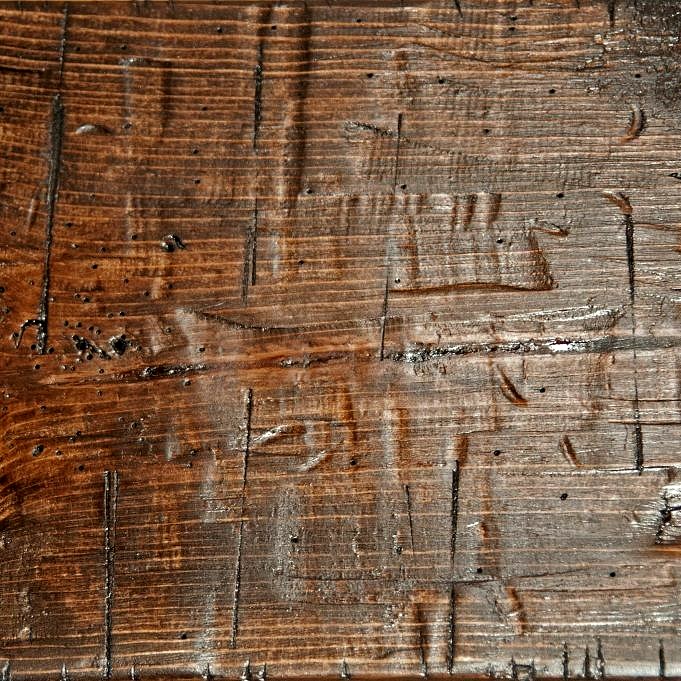Have you ever wondered how old furniture pieces get that aged, worn look? It’s not as difficult as you might think.
You can transform a boring piece of furniture in just 8 steps. Let’s get started.
Find a piece of furniture or even just a piece of wood you think will look good with a distressed look. I like to cruise estate sales or even just the curb for trash.
Quality furniture or „actual“ antique furniture I might try to restore to its original condition. I will often add a distressed look to cheaper furniture that lacks character.
- Medium-fine Grit Sandpaper
- Paint
- Brushes
8 Steps To Distress Any Furniture Piece
1. Disassemble Furniture
This doesn’t mean tearing the entire thing apart. You can remove knobs, handles and drawers.
If you take the time to do so, everything will be much easier.
3. Paint Furniture
Choose a color that you think would look great distressed. Generally bright, vibrant, or lighter colors work best. But, if you’re using a light colored stain, a darker color could look cool too.
It is always better to use two colors, and to apply the darkest first (not gospel). This will allow the second layer to show through, as you’ll see later.
Here are some tips: Make sure to check out the „mistint“ section of your hardware store. Mis-tints are generally custom mixed paints that were done wrong or returned for one reason or another. You can buy pints and gallons if you aren’t too picky. However, avoid glossy or enamel finishes because they are more difficult to sand.
Here you can be your creative self and create a unique piece.
4. To Darken The Paint, Add Water
It is likely that this number is around a
5. A Light Paint Can Be Used To Thin The Color Of Furniture
The goal is to achieve a wood grain look. Because the bristles are less uniform, I prefer to use a lower-priced brush.
Just go slow and barely touch the surface with the brush using long strokes. Vary where you begin and end to prevent the pattern looking too consistent (this is one of the few times „inconsistency“ is a good thing).
6. Repeat Step 5 With A Lighter Color
You can follow the same steps as in step 5 but use a lighter color (white, cream or light blue) ..). I would also use a more watery mix (
7. Sand Furniture
Use a medium-light grit sandpaper. You should not sand the paint with a thinned (wood grain) pattern.
I like to sand all edges and corners down to the wood, but this is not always consistent. It gives the piece a well-worn look.
8. Apply Stain Or Polyurethane
You should generally use a lighter stain and semi-gloss polyurethane. It’s entirely up to you.
This is the final step to achieve distressed antique looks.



